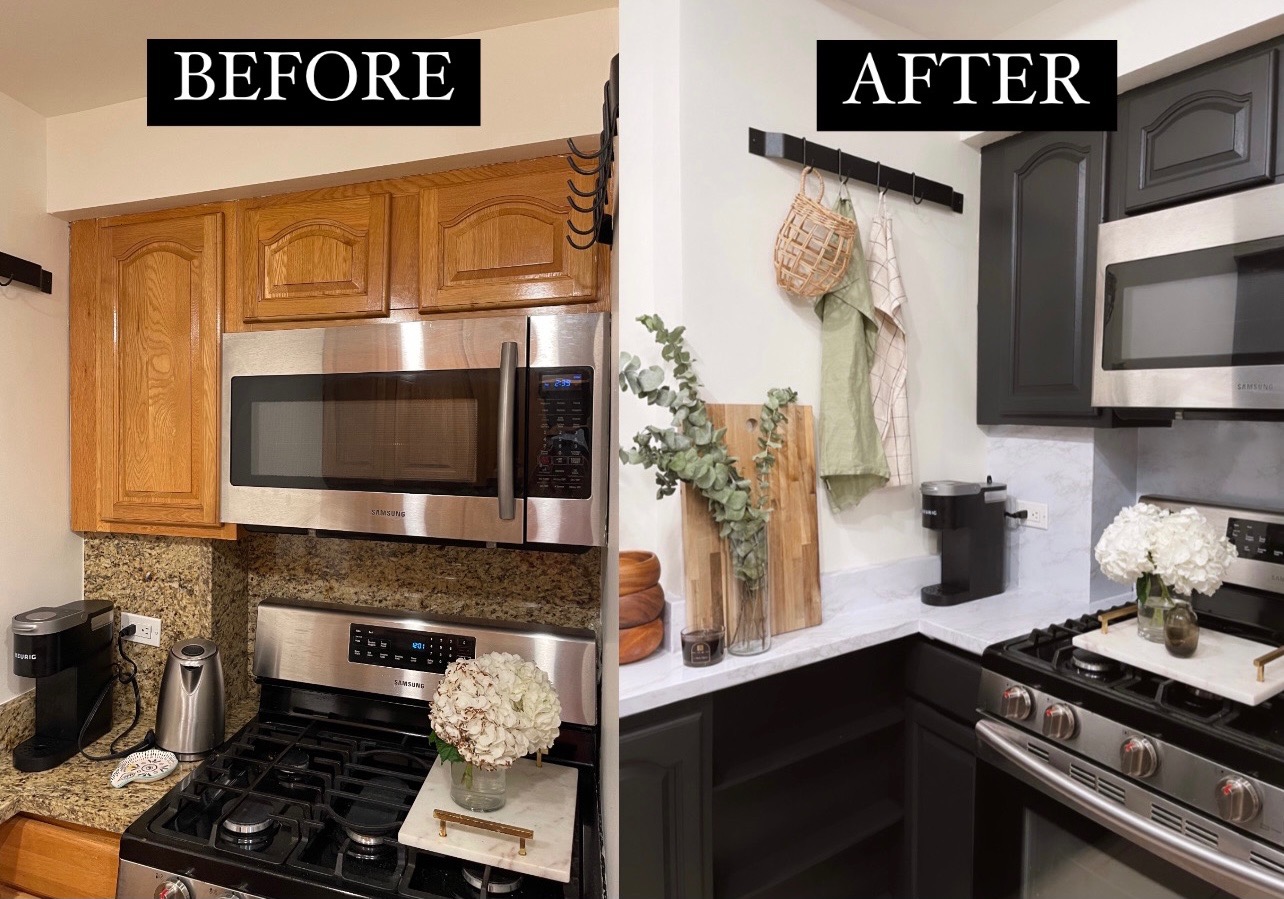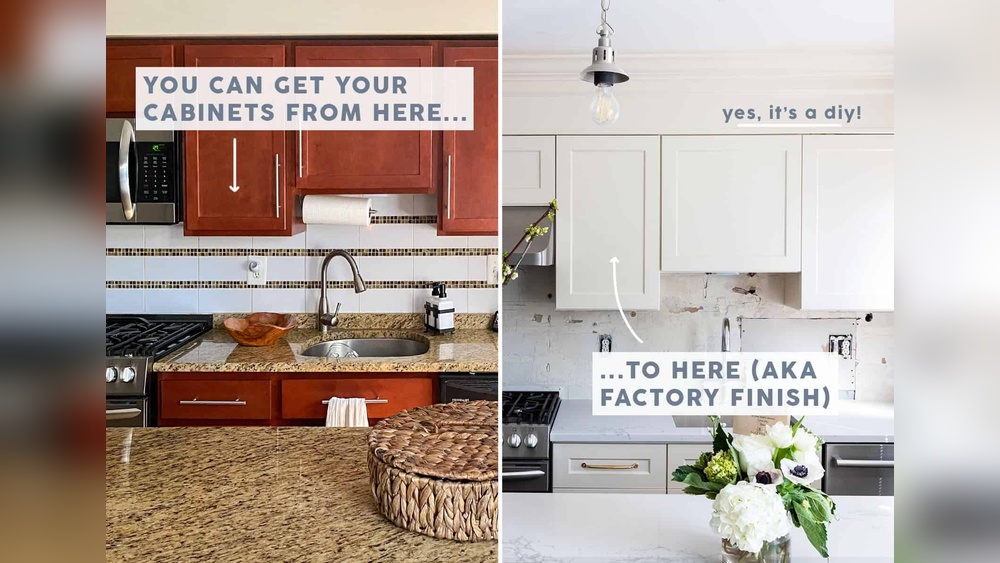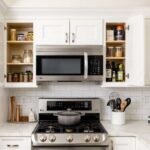Are your kitchen cabinets looking tired and outdated? Repainting them can give your kitchen a fresh, stylish makeover without the cost of a full renovation.
But if you’re wondering where to start or how to get that smooth, lasting finish, you’re in the right place. This guide will walk you through simple, clear steps to transform your cabinets into a beautiful focal point. By following these tips, you’ll save money, avoid common mistakes, and enjoy the satisfaction of a job well done.
Ready to breathe new life into your kitchen? Let’s dive into how to repaint kitchen cabinets the easy and effective way!
Gather Supplies
Choose a paint and primer made for kitchen cabinets. Use semi-gloss or glossy paint for easy cleaning. A bonding primer helps paint stick well to old surfaces.
Select brushes with synthetic bristles for smooth paint application. Use a foam roller for larger flat areas to avoid brush marks. Have sanding blocks and paint trays ready.
Wear gloves to protect your hands from paint and primer. Use a dust mask when sanding to avoid inhaling dust. Work in a well-ventilated area to keep air fresh.

Remove Cabinet Doors
Before removing cabinet doors, label each door and hardware carefully. Use a piece of masking tape and write a number or letter on the tape. Stick the tape on the door and the matching frame spot. This helps you know exactly where each door goes when you put them back.
Organize all screws and hinges in small containers or bags. Label these containers with the same number or letter as the door. This way, you will not lose any parts and can easily find what you need during reassembly.
Clean Surfaces
Grease and grime can stop paint from sticking well. Use a degreasing solution to clean cabinet surfaces. Apply it with a sponge or cloth. Scrub gently but thoroughly. This removes oils, dirt, and food residue.
Rinse the cabinets with clean water after using the degreaser. Dry all surfaces with a soft cloth. Make sure no moisture stays on the wood. This helps paint stick better and last longer.
Choose a non-toxic degreaser if you want a safer option. Avoid harsh chemicals that can damage cabinet finishes. Cleaning well is the first step to a smooth, fresh paint job.

Sand Cabinets
Lightly scuff the old finish using fine-grit sandpaper. This helps the new paint stick better without removing all the old paint. Focus on areas with a glossy surface to dull the shine.
Smooth any rough spots or edges by sanding gently. This prevents bumps from showing after painting. Use even strokes to keep the surface uniform.
Always wipe the cabinets clean after sanding. Dust can stop paint from sticking well, so remove it with a damp cloth.
Apply Primer
Choose a primer that fits the cabinet material. For wood, use a wood primer. For laminate or metal, select a bonding primer. This ensures the paint sticks well and lasts long.
Apply the primer in thin, even coats. Cover all cabinet surfaces, including edges and corners. Avoid thick layers that can drip or peel later.
Use a brush for corners and a roller for flat areas. Let each coat dry fully before adding another. This creates a smooth and strong base for the paint.
Paint Cabinets
Start by applying a thin, even first coat of paint on the cabinets. Use a high-quality brush or roller for smooth coverage. Let the paint dry completely before moving to the next step. This usually takes about 4 to 6 hours, depending on the paint type and room temperature.
The second coat is important for full coverage. It helps cover any uneven spots or streaks left by the first coat. Apply the second coat carefully and evenly. Allow it to dry fully to ensure a durable finish that lasts for years.
Finish And Protect
Apply a clear protective topcoat to shield your cabinets from damage. This layer guards against scratches, stains, and moisture. Use a polyurethane or polycrylic finish for the best results. Choose a water-based topcoat for easy cleanup and less odor.
Allow the topcoat to dry fully before touching or reinstalling cabinet doors. Drying time usually ranges from 4 to 6 hours, but check the product label for exact times. Avoid rushing this step to ensure a durable, long-lasting finish.
For best results, apply two or more coats of topcoat. Lightly sand between coats with fine-grit sandpaper to keep the surface smooth. This process helps the next coat adhere better and creates a professional look.
Reinstall Doors
Attach the hardware carefully to avoid stripping the screws or damaging the cabinet doors. Use the original screws if possible for a secure fit. Tighten each screw just enough to hold the hardware in place firmly. Over-tightening can cause cracks or misalignment.
Check the door alignment before fully tightening the hinges. Close each door slowly to see if it fits flush with the cabinet frame. Adjust the hinges slightly if doors are uneven or not closing properly. Proper alignment ensures smooth operation and a neat look.
Test the doors by opening and closing them several times. This helps confirm the hardware is secure and the doors are aligned well. If needed, make minor adjustments to avoid gaps or rubbing against the cabinet frame.
Maintenance Tips
Use a soft cloth or sponge for cleaning kitchen cabinets. Avoid scrubbing hard surfaces to keep paint from chipping. Harsh chemicals can damage the paint and wood. Choose mild soaps or gentle cleaners instead. Rinse well and dry completely after cleaning. This helps maintain the fresh look of the paint. Regular gentle cleaning extends the life of your cabinet finish. Protect the cabinets by avoiding strong chemical sprays or abrasive pads. These can cause fading or peeling. Keep cleaning simple and safe for best results.

Frequently Asked Questions
Can I Just Paint Over My Kitchen Cabinets?
Yes, you can paint over kitchen cabinets. Clean, sand, and prime surfaces first for proper paint adhesion and durability. Use suitable primers for laminate or special materials. Choose durable, easy-to-clean paint finishes like satin or semi-gloss for best results.
Can I Just Paint Over Already Painted Cabinets?
Yes, you can paint over painted cabinets by cleaning, lightly sanding, and applying a quality primer first. This ensures proper adhesion and durability. Use paint suitable for cabinets, like satin or semi-gloss enamel, for a lasting finish. Test on hidden areas if unsure about your cabinet material.
Can I Repaint My Kitchen Cabinets Myself?
Yes, you can repaint kitchen cabinets yourself. Clean, sand, and prime surfaces well before painting for best results. Use durable paint for lasting finish.
Can I Just Paint Over My Kitchen Cabinets Without Sanding?
You can paint over kitchen cabinets without sanding only if the surface is clean and the paint adheres well. Light sanding improves adhesion and durability. Skipping sanding may cause peeling or uneven finish. Proper cleaning and priming remain essential for lasting results.
Conclusion
Repainting kitchen cabinets can refresh your space affordably. Clean and sand cabinets well for best results. Use a good primer to help paint stick. Apply paint in thin, even coats for smooth finish. Allow each layer to dry before adding another.
Choose durable paint designed for kitchen use. Take your time and work carefully for lasting beauty. Enjoy your updated kitchen and the satisfaction of DIY work.

Yes, working as , Food Blogger and Product Reviewer for last 6 years. Here you will get amazing deals for Smart kitchen products. I am your best source for the latest update in cooking trends. I provide insightful articles, reviews, and analysis on cutting-edge kitchen gadget. My mission is to empower readers with the knowledge they need to stay ahead in a rapidly evolving coking world. Join me as we explore the future of food technology and how it shapes our lives today and tomorrow.





